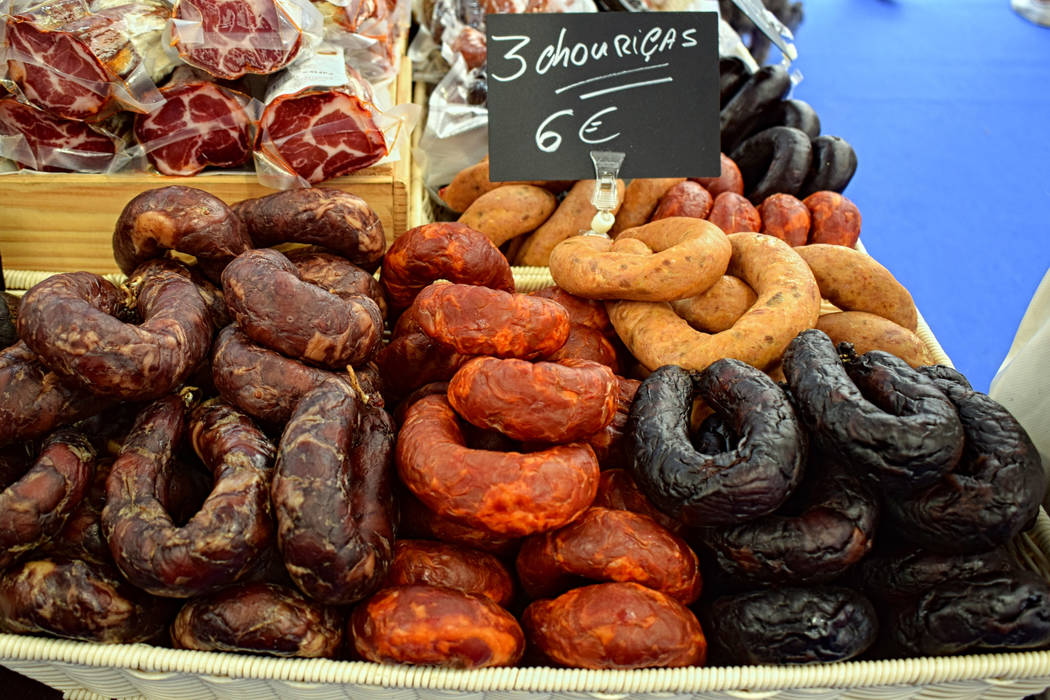
| Construction | ninth century |
| Reign | Alfonso III of Asturias |
| Style | Romanesque |
Chaves Castle, situated in a border region, was the site of several critical conflicts. It was constructed in the ninth century, before the formation of Portugal, during the Christian reconquest, and restored during the reigns of kings Afonso III and Dinis. This monarch completed the castle that has overshadowed the lovely city of Chaves for centuries.
The traces existing in the vicinity of Chaves, legacies of prehistory, compel us to recognise the existence of human activity in the Paleolithic. Numerous Neolithic artefacts have been discovered, including those from Mairos, Pastoria, and S.Lourenço, as well as those from protohistoric civilizations, namely in the numerous castros found atop the hills that encircle the entire Alto Tâmega region. The Roman soldiers that conquered those areas two millennia ago effectively settled in the lush Tâmega valley, exactly where the city now stands, and built fortifications on the edges, utilising some of the existing castros.
During the Roman invasion of the Iberian Peninsula, the Romans established themselves in the Tâmega River valley, where the city now stands, and built fortifications on the periphery, utilising some of the existing castros.
Walls were built to protect the populace, and Trajan’s bridge was built to span the river. They promoted the use of mineral-medicinal hot waters by establishing thermal spas, mining ores with a focus on gold veins, and utilising other natural resources. Trajan’s bridge is thought to have been erected with the assistance of Seventh Legion legionaries (Legio VII Gemina Felix).
Such was the prominence of this urban centre, which was promoted to the title of municipality in the year 79 AD when Tito Flávio Vespasiano, the first Caesar of the Flavian line, ruled.
The contemporary city of Chaves gets its gentilic name, flaviense, from the old appellation Aquae Flaviae.
According to the remains discovered, the city’s core and civic center were located on the heights around the location currently occupied by the Mother Church. The term “responsibility” refers to the act of determining whether or not a person is responsible for his or her own actions. The most important archaeological pieces, like a gravestone that suggests a gladiator fight, were found and are still on display at the Museu da Regio Flaviense.

According to the considerable archaeological evidence, the region’s basic human occupation dates back to prehistoric periods. Certainly dating back to a pre-Roman castro, at the time of the Roman invasion of the Iberian Peninsula, what is now Chaves was an important urban centre, as the archaeological remains indicate. The Roman road between Bracara Augusta (now Braga) and Asturica Augusta (now Astorga, in Spain) cut through the river, separating the two sides. The Ponte de Trajano was built in the 1st century to connect the two sides of the river. During this time, the first wall surrounding the settlement was extended to the modern city’s historic core when the Mother Church was constructed.
The invasion by the Suevi began in the third century, peaking with the battles between Remismundo and Frumário over who should rule. Because of this, the town was almost completely destroyed in 411. Frumário won, and Bishop Idácio de Chave was arrested. Come, King (713). Since conflict between Moors and Christians didn’t stop until the 11th century, the new rulers constructed further defenses for Chaves.
During the Christian reconquest of the Iberian Peninsula (866–912), Afonso III of León took Chaves from the Moors. He was also in charge of rebuilding the fortress.
In the ninth century, Count Odoário is credited with constructing the first fortress. During the first decade of the tenth century, however, the Moors retook control of Chaves.
Characteristics
Only parts of the wall and the keep are left of the mediaeval castle. This structure features a twelve-metre-wide by about twenty-eight-metre-high quadrilateral floor layout with a cistern on the bottom level and three stories with barrel-vaulted ceilings. Some holes are ripped in its granite walls, and on the east elevation there are wooden balconies. At the apexes, tiny, semicircular balconies are supported by stones and are crowned with merlons and battlements. It may be reached from the first level through an inclined stone stairway with guardrails made of the same material and a circular, arched entrance with a twisted frame that is topped by a royal coat of arms with nineteen castles.
The tower’s south-west facade features a perfectly arched gateway connected to the building by a barbican that is traversed by a darve.
A projecting, rectangular, boulder-lined balcony guards this entryway.
A similar balcony is seen on the northwest façade, as well as a balcony with a round corner at the intersection of these facades.
A balcony attached to a walkway on the second story of the tower provides access to the adarve. The set is partially encircled by an elegant garden, which is bordered by walls.




